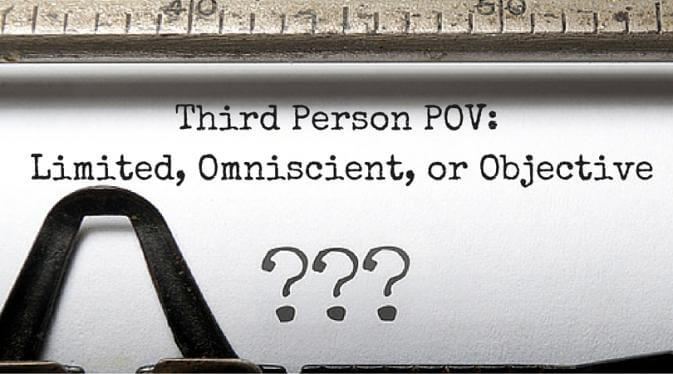Third Person Limited (and More)
There are three main types of third person point of view in literature: third person limited, third person omniscient, and third person objective. Each has advantages and disadvantages. Here’s the run-down and some examples.
There are a few key decisions that a writer has to make early in the writing process. Where is your book going to be set? Who will the protagonist be? What is the central conflict?
Before any of these decisions can be made, however, you first have to decide what point of view (or POV) will best serve your manuscript. You probably know the difference between the first person POV, where the story is narrated by the protagonist using the pronoun I, and the third person POV, which is narrated with pronouns such as he and she.
What you may not know is that even once you’ve chosen the third person POV, there are various types of third person POV that you can use, and these different styles can change the tone and scope of your manuscript.
Today, we’ll talk about three of the most common types of third person POV.
Third Person Limited
Third person limited, also known as third person close, tells us the story using pronouns such as he and she but only gives us access to what the protagonist thinks and feels, and we cannot know more than the protagonist knows.
In third person limited, the reader can’t know more than the protagonist knows.
For example, in a third person limited POV, we can know that our protagonist John loves waffles and has a crush on his colleague Brenda, but we cannot know that Brenda prefers pancakes and has barely noticed her colleague John. Since we don’t have access to Brenda’s head, our knowledge is limited to what’s in John’s head. Writers often choose this POV because it allows them to dive into the head of their protagonist and give us full access to the protagonist’s motivations and emotions.
Third Person Omniscient
The third person omniscient POV is all-knowing and employs a narrator that can interpret the plot and offer commentary on characters and events. In this POV, you can write a scene where Brenda and John are waiting for their coffee to brew in the break room and the reader can know that while Brenda is anxious for her cup of joe, John is hoping the machine will break so he can strike up a conversation with Brenda. In this POV, we can also learn that the coffee machine has already broken once this morning, even if neither Brenda nor John knows this fact. The breadth of a third person omniscient narrator’s knowledge means that we can know much more than our protagonist and understand the meaning of events that characters themselves may not be able to comprehend.
Third Person Objective
In the third person objective POV, the story is told in the style of reporting, and the narrator cannot dip into the heads of any of the characters. The story is told in an objective way, with the narrator telling us what happened, where it happened, and who was involved. In this POV, we can see Brenda and John waiting for their coffee to brew, but we cannot know what either of them is thinking. If they speak, we will hear their dialogue, but we won’t know what either of them felt as they spoke these words. In this POV, the reader must infer what is going on in the heads of these characters because the third person objective narrator is not privy to this knowledge.
How Do I Pick the Right Point of View?
How can you find out which third person POV is right for you? It’s not as complicated as you might think. For example, if you want your reader to have access to the thoughts of only your protagonist, you would choose the third person limited POV. If you want your reader to have access to the thoughts of your protagonist as well as other characters, you would choose the third person omniscient POV. If you’d prefer that the reader only see the events of the plot unfold without any access to the interior lives of your characters, you would choose the third person objective POV.
The genre you’re writing can also help dictate the POV you choose. For example, young adult novels and romance novels in the third person POV are almost always written in third person limited because the plot often hinges on the emotional growth of protagonist, and putting the reader inside the protagonist’s head is the easiest way to see this change occur. Third person omniscient, on the other hand, is more popular for genres like literary fiction, where a narrator is useful in giving a broader context to the story, as well as speculative fiction like science fiction and fantasy, where the author will often employ an omniscient narrator to deliver a level of world-building and foreshadowing (“If only these characters knew what awaited them!”) that the third person limited cannot deliver.
If you’re still stuck on what POV to choose, try writing the same scene from all three POVs and then ask yourself which POV strikes the tone that’s appropriate for your book. Or vice-versely, write the scene and see what comes naturally to you. Oftentimes, your voice will make itself heard.
Have other questions? Swoon Reads is happy to answer them for you! Check out their writing guide and e-mail them any of your pressing questions on writing, the editorial process, or about publishing in general at swoonreads@macmillanusa.comcreate new email.
You May Also Like…






